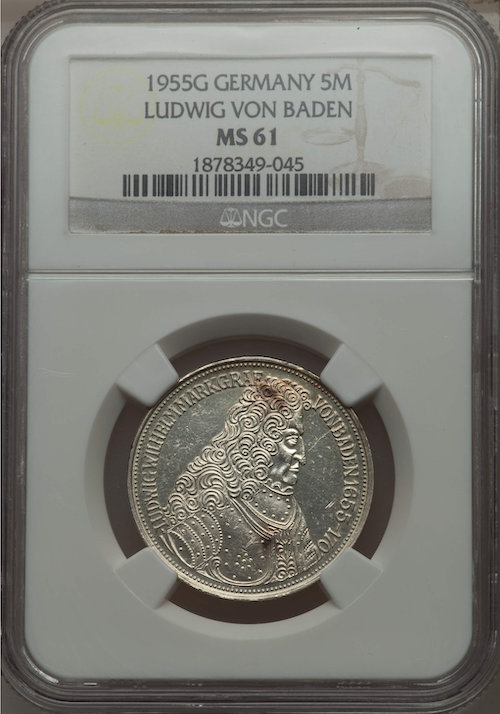There are all kinds of slabs, but today I am going to talk about coin encapsulation by independent grading and certification companies. Surely you have seen coins encapsulated in small plastic cases that bear a short identification of the coin, the grade of conservation attributed to it and an identification number of the capsule. Well, at first it doesn’t seem like a bad idea, because it manages to make a coin with a lot of details about its condition become an object that can be summarized in a number on the Sheldon scale (from 1-70).

Indeed, an attempt is made to objectify a highly variable object, to simplify it for investors without knowledge… and it can be said that they have been very successful, only thus are the important price differences due to barely perceptible changes from MS64 to MS65, or from MS65 to MS66. On the PCGS page, one of these services, they have a price guide, and we can see, for example, that a Morgan Dollar from 1878 Carson City mint goes from being worth $550 in MS64 to $1,500 in MS65 and $4,000 in MS66 . A very subtle difference to most collectors and dealers.
https://www.pcgs.com/prices/detail/morgan-dollar/744/most-active
I know that the market has imposed the desire for better preserved pieces, but I think that I am not the only one who does not detract from the value of the pieces in circulation, and who considers each coin to be a historical witness of a unique moment, and a reflection of those who lived and gave value to that currency. Personally, I have always considered conservation as an important aspect, but above all because of not going back on it. In other words, whoever has an XF coin could patiently take it to an VF, even if it makes no sense, but a VF can never be an XF again… This is obvious, and I think it justifies a differentiation in prices. In addition, there are series that are extraordinary beautiful in MS, and which are far uglier even in AU. For example, I can think of the series of silver Escudos (2.5, 5 and 10) from Portugal from 1932-1951 that, with little wear, already look really bad. But apart from these cases, I think that the evolution of prices in the market is unleashed by speculation. Speculation, on the other hand, fueled by these certification companies, because I am convinced that without them, no one would venture to pay those price differences for such subtle changes. In the end they make speculation possible. On the other hand, they are not perfect… I think this example says it all:
https://www.sixbid.com/en/heritage-auctions-inc/1104/spain/1028747/republic-10-centimos-1938-km756
10 centimos from the Second Spanish Republic from 1938 in MS61… typical forgery to fill in the gaps, of which I myself bought one as a child for 100 pesetas… luckily it wasn’t sold… and not only that, it’s withdrawn from the Heritage website, because it’s a major slip… And this is part of the problem… you trust one of these companies and relax vigilance, and what’s worse, this is a gross fake, but… What if it was a decent fake? By putting it in the capsule, you cancel part of the controls you can do, especially the edge…
Therefore, and as a summary, these companies have facilitated the creation of somewhat clearer graduation standards, since there are already millions of encapsulated pieces out there, and although it is true that there is a certain inflation of conservations (https://www. coinworld.com/news/precious-metals/gradeflation-encourages-mutually-profitable-resubmissions.html), I think overall they have helped improve the picture. But the price is a rampant speculation that benefits the companies themselves and the speculators, making it easier for investors to make entries in numismatics, without the necessary knowledge. And on the other hand, to keep the coins away from the collector who can no longer touch them, and also make it even more difficult to store the collection. For those who are looking for a few valuable coins, it’s fine, but for the crazy ones who like to collect very different things…
